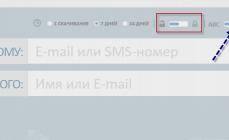Today the main support period for the entire line of Windows 7 OS, as well as server versions – Windows Server 2003, 2008 and 2008 R2 has ended. A corresponding notice appeared on the Microsoft website. Patches for critical vulnerabilities remain available free of charge for an additional five years as part of extended support.
Microsoft's policy regarding the validity of its products has not changed since June 1, 2004. For operating systems and development tools, they are divided into two periods of five years. The main support phase applies first. During the first five-year period, all users receive absolutely all updates for free, regardless of their type. Some expand the functionality of familiar tools, others add new system utilities and change the appearance, and others correct errors of varying severity levels. Additional support is also provided upon request - searching for solutions to typical problems and remote consultations on specific issues.
If during this time a new version of the product appears, then the end of support for the previous one is revised and set as 24 months from the date of start of sales of the heiress. The same goes for fix packs. The desire to quickly get rid of the burden of supporting Windows 7 is one of the reasons why a second service pack was never released for it.
After the end of the five-year period from the official start of OS sales, a period of extended support begins. Only critical patches remain free, and downloading all the rest requires a separate paid license. Essentially, this is a way to gently force users to migrate to newer products. Traditionally, the majority of users prefer an operating system that has been mastered and proven over the years to new and always crude products. The most noticeable changes in the latter usually concern the interface and stability, and not for the better.

According to NetMarketShare, Windows 7's share of all desktop operating systems exceeds 56%. The total share of Windows 8 and 8.1 remains at a modest 13.5%. This is lower than the current result of old Windows XP, which was officially buried last year. In other words, sales of the G8, which appeared two years ago with many conceptual innovations, are still extremely sluggish.
By using fixed support periods to follow XP, the company is eliminating other workhorses from the scene in an effort to focus customer attention on new products. Home users are offered Windows 8.1 and an introduction to Windows 10 Technical Preview. The table with explanations about the end of support ends with the offer “Buy Windows 8 today.” Apparently there was a typo here, since retail sales of Windows 8 were discontinued on October 31, 2014. Currently you can only purchase version 8.1.

In turn, corporate customers are focused on Windows Server 2012 and the Azure cloud platform. It is noteworthy that the day before the end of support for older server versions of Windows, prices for Azure in Russia were increased by 44%.
What does this mean and what will be the implications for home and business users?
Regular support instead of extended support
Refusal of extended support in favor of regular support does not mean that Windows 7 is dead. The system will simply no longer receive new features and technology updates. From now on, companies will no longer be able to receive free help for OS-related problems; they will now have to pay.
Windows 7 is currently in what is called “extended support” until January 2020. This means that in the next five years, ordinary users and organizations will regularly receive critical system security patches.
Of course, news about the end of the system's life cycle does not bring much optimism. Beginning in mid-2014, analysts expressed concern about the upcoming transition and advised companies to prepare for an OS migration.
What conclusions have companies drawn since support for Windows XP ended?
Windows XP, which is over 12 years old, is the second most popular OS in the world. Past experience has shown that at least 20 percent of the world's population still uses Windows XP even after the system's official demise. Windows XP users include a large number of organizations that were unable to deploy the new OS on existing machines.

Statistics on the popularity of Windows operating systems - data from Bitdefender Labs, April 2014
One of the reasons why companies are delaying the system migration process so much is the incompatibility of user applications with Internet Explorer version 7 and higher. Switching costs are also quite significant. Zero-budget migration is nearly impossible due to the lack of necessary tools, processes, and bandwidth.
Bitdefender Senior Digital Threat Analyst Bogdan Botezatu said:
Organizations should not underestimate the complexity of the complete transition process. It is important to start migration as early as possible to avoid serious or unexpected security risks. An outdated OS can leave millions of users vulnerable to real threats. This situation occurred in April 2014, when Windows XP users were at risk of contracting a zero-day threat due to the use of an unupdated Internet Explorer browser.
Do you think companies are better prepared for the “funeral” of Windows 7 than they were for the end of the life cycle of Windows XP in due time?
Found a typo? Highlight and press Ctrl + Enter
Today, the Windows 7 operating system is the most popular among PC owners. And not only ordinary users, but also large companies operating in different fields of activity.
Unconditional leadership
Despite the fact that Microsoft has already officially announced the timing of the liquidation of this OS, its popularity has not decreased. Moreover, according to surveys, the Windows 7 platform is in demand among almost 50% of PC users around the world. This is more than all other Microsoft operating systems combined.
And now, when support for Windows 7 ends, OS owners are encouraged to switch to more current systems of the latest generations (Win 8, 10). However, even during the year when the manufacturing company offered to upgrade Windows 7 to Windows 10 for free, almost no one took advantage of this offer.
Current situation with Windows 7
Basic support for the system was completed back in 2015, but nevertheless, now users will be able to receive an extended package of updates and improvements. At least until 2020 the situation will not change.
But what about those who plan to continue to remain on their favorite “axis”, in which everything is already so dear and familiar? to the required extent? But there’s no way - with a complete lack of technical support, Win 7 will turn into a complete vulnerability (literally).
What threatens users who do not want to change Win 7
Here is a whole set of negative aspects that sooner or later all fans of the seventh Windows will have to face, and there will be almost no way to protect themselves from them:
- lack of updates to main modules and components;
- lack of the latest security modules against hacker attacks and potentially dangerous programs;
- incompatibility of the system with the latest PCs.
Several Microsoft products have already gone through this - the famous Win XP and the predecessor of the “seven” Win Vista. And unfortunately, the same situation will most likely repeat itself with Windows 7.
Options for getting out of this situation
To understand the current situation of what to do when Windows 7 support ends, there are several options.
The first way. Even if Win 7 is not officially supported, many users will still be using their system to its full potential for several years to come. After all, critical updates are not released very often, and anti-virus software will help ensure some security of your PC from hacker and virus attacks. Therefore, if the end of mainstream support for Windows 7 affects the quality of the OS, it will obviously not be immediately. A similar situation currently exists with the popular Win XP, which is already considered obsolete.

Second way. Transition to new Microsoft operating systems. Not everything is so simple here, but it is clear that the first candidates to update Windows 7 will be enterprises and large companies where information security issues pay great attention. As a counterbalance to this path, it can be assumed that ordinary people will not be so hasty. The reason is weak transitions to new versions with free options in the past.
Against the transition to Win 10 is the fact that, according to unverified information (albeit quite widespread on the Internet), it transfers too much confidential user data to the manufacturing company.
Third way. Selecting operating systems from other manufacturers. It seems quite likely that the Windows 7 support service will officially stop providing all possible assistance to users and the demand for alternative systems will rise. We are talking about mobile operating systems Android and iOS. In addition, Linux also functions well, being less demanding on hardware and easier to manage.
The near future of Windows 7
Actually, the popular system is currently operating at full capacity, so it is still too early to write it off. Moreover, the Internet is simply overflowing with various Windows add-ons and components that can be downloaded and installed without the participation of the official update center. So in the next few years, even as Windows 7 support ends, there are ways to improve the situation.

But, of course, given the current trends and wild popularity, I would like Windows 7 to work in full for a long time with official support from Microsoft. Perhaps the company will still rely on the number of consumers and leave the system in service, even with minor visual and technical changes.
Microsoft representatives report that this move is dictated by a new support policy for all current operating systems.
Until now, Microsoft has promised to support consumer software products for five years from the date of official introduction. This support includes regular releases of security updates, bug fixes, and improvements to improve stability. The first five-year period is called “mainstream support”. At the same time, enterprise products are supported for at least 10 years: the first five years under the “main support” program and another five years in the form of “extended support”. During the Extended Support Period, Microsoft will release security patches to all customers, and all other security patches will be distributed only to organizations that have signed support contracts with Microsoft.
Before the latest changes, Vista's consumer editions - Home Basic, Home Premium, Starter and Ultimate - were scheduled to be retired in less than two months, on April 10, 2012. According to the new policy, this date is moved to April 11, 2017.
Consumer versions of Windows 7 were previously planned to be supported only until January 13, 2015, and now the deadline has moved to January 14, 2020 - giving users enough time to find a replacement.
Changes in terms of support for Windows 7 and Vista first became known when changes were discovered in the description of price list items (SKU). Microsoft subsequently confirmed information about changes in support periods for key consumer products. After these innovations, all editions of current operating systems received a formally identical support cycle. It is noteworthy that this extension took place almost immediately after major Linux product manufacturers announced a significant increase in the support period for their industrial products.
As for the next version of the Windows 8 client operating system, Microsoft has not yet announced the exact list of consumer versions for sale with desktop PCs and laptops. These products will likely also receive a 10-year support cycle. It turns out that if Windows 8 is released in the fourth quarter of this year, as expected, then support for the platform for private users will last at least until the beginning of 2023.
Extending support for Vista and Windows 7 is not the first time Microsoft has given users extra time to prepare for the transition to new systems. Thus, in 2007, the period of active support for Windows XP Home was extended until 2009, and the period for complete withdrawal of support was postponed to April 2014, like the corporate version of Windows XP Professional. In general, the Windows XP platform managed to receive many delays in its long-determined “death”. For example, in 2008, Microsoft allowed manufacturers to equip weak netbooks with obsolete systems until mid-2010 - after this step, the Linux platform had virtually no chance of gaining a foothold in the then promising netbook market.
On the Microsoft website you can see an announcement about the Windows life cycle. Many people are interested in until what year will support for Windows 7 be provided? It is necessary to understand that the previously organized support ended in January 2015. After the termination of basic support, you can resort to extended support. It includes paid services.
Windows 7 program. Until what year will the system be supported?
Each Windows product has its own life cycle. Knowing its key dates, you can make an informed decision about the update period and the time for making other changes to the programs. The company refers to the end of support as stopping the release of fixes and updates.
Time flies very quickly. The Windows 7 update package was released several years ago. Extended support continues until January 14, 2020. The recommended package is Service Pack (SP1) or Server 2008 R2.

Users are interested in the duration of support for systems with SP1. It is carried out for another two years after the next update package has been released, or until the end of the life cycle of the system product. You can get the package from a special page. However, for installation you will need to read the help documentation and step-by-step installation instructions.
Reasons for switching to SP1 other than the possibility of using technical support
Windows 7 SP1 is necessary for users to operate their computer reliably and safely. Server 2008 R2 SP1 includes an expanded set of features related to virtualization for enterprise computing. This includes Microsoft RemoteFX technologies, as well as dynamic memory.

Using these two update packages makes it possible to:
- timely installation of new updates for Windows version seven
- obtaining technical support for software
- Simplify the installation of cumulative update package types
- application of a full range of virtualization technologies
- ensuring comfortable and mobile computer operation
- facilitating the deployment of the update package and improving the efficient work of specialists in the field of Internet technologies

The new version of Windows will be released by the end of 2018.






